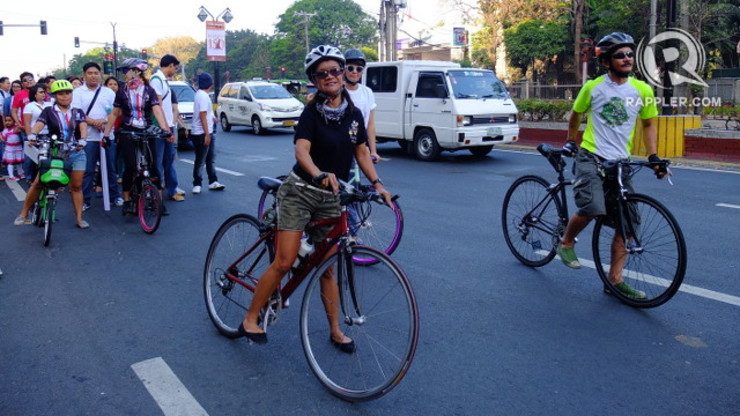SUMMARY
This is AI generated summarization, which may have errors. For context, always refer to the full article.

MANILA, Philippines – Cebu City will make another push for road sharing by holding its third road sharing day in major boulevards on Sunday, September 28.
On that day, a “half road” policy will be implemented in the major roads Osmeña Boulevard, General Maxilom Avenue, Gorordo Avenue, and Escario Street from 3 pm to 7 pm, according to Cebu Daily News.
This means that the half of the road nearest sidewalks will be reserved for pedestrians and cyclists while the other half will be for the usual flow of motorized vehicles. (READ: Commuters to gov’t: Limit cars to half of the roads)
The one-day experiment, led by the Movement for a Livable Cebu (MLC), is part of a push for the city to prioritize pedestrians and mass transport. By giving those with less wheels more of the road, organizers hope to wean more people from their private vehicles and use more sustainable means of transport.
Another intended outcome of the initiative is to lessen vehicle congestion in the city’s roads.
Cebu Green Loop Plan
Organizers, with the help of Cebu City Hall, will be installing rope barriers to delineate the halves of the roads.
Aside from pedestrians and cyclists invited to take advantage of the one-day policy, MLC lead convenor Marc Canton also encouraged the public to jog, skateboard, or join activities like Zumba, Yoga, and street art exhibits to be set up along the route.
The Sunday road-sharing scheme is part of a greater campaign, called the Cebu Green Loop Plan, for well-managed and sustainable urban growth in the city.
The movement was initiated by students and teachers of the University of San Carlos College of Fine Arts and Architecture. They are joined by experts in urban planning, landscape architecture, and environmental science and law.
Aside from sustainable transport, campaigners call for more parks, a “cultural and historical district,” an arts hub, recreation and tourism zone in nearby Mactan and a third Mactan bridge.
Road-sharing for the entire PH?
This is the third time since 2011 that a road-sharing scheme has been implemented in the major Visayas urban hub.
In 2011, the road-sharing experiment was introduced by environmental lawyer Antonio Oposa Jr. He convinced the Cebu City Hall to close the city’s longest street, Osmeña Boulevard, to vehicles on Independence Day, June 12, and devote it to pedestrians, joggers, and cyclists instead.
But the scheme, later on implemented during a weekday, was badly received by jeepney drivers and private car drivers who had to endure traffic jams caused by road closures.
Oposa recently tried to introduce road sharing to other cities in the country.
He was joined by supportive citizens when he filed a petition with the Supreme Court to call on government agencies like the Department of Public Works and Highways (DPWH) to implement road sharing nation-wide, which he said is enshrined in the country’s laws.
Model cities
Other cities have held similar road-sharing activities, including Pasig City, San Juan City and Marikina City and Iloilo City.
But will one-day road-sharing schemes ever translate into long-term transportation policies?
Examples from other countries show it’s possible.
Antonio Dans of the National Academy of Science and Technology cited New York City and the Netherlands as role models for road sharing.
The Netherlands, a country famous for its bike-crazy citizens, also started with just a car-free day.
“When people loved it, it became a car-free week. When that clicked, they had car-free zones. And then they had bicycle lanes,” he said at a science and technology event last September 24.
New York City was able to overhaul its transportation system to favor cyclists.
“New York is a megacity. They were able to re-design their roads. If you look at the bicycle lane map of Manhattan, you will be shocked. It’s a web. They’ve successfully engineered the bicycle lanes. It took some engineering but also some creative thinking,” he said. – with reports from Pia Ranada/Rappler.com
Add a comment
How does this make you feel?
There are no comments yet. Add your comment to start the conversation.